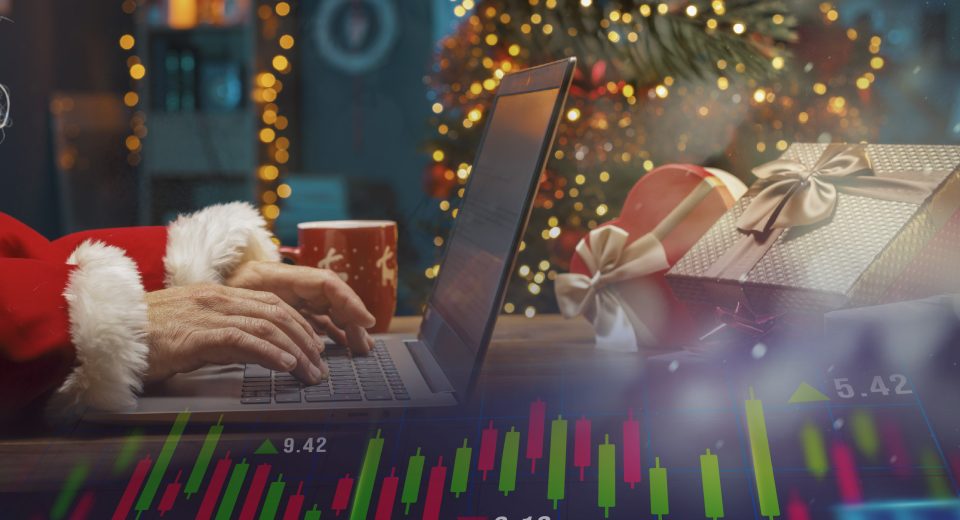5 Risk Management Tips for Prop Trading

Proprietary trading involves the usual market risks traders face, such as liquidity, volatility and leverage. And although you are trading with the broker’s funds, the capital tends to be quite a significant amount, sometimes as high as $400,000. This means adverse market moves could severely impact the broker’s finances and even lead to prop traders losing their funded accounts. Therefore, staying within pre-defined risk parameters and effectively managing market exposure is critical, as are analysing the markets and fine-tuning trading strategies.
Here’s a look at some of the most effective risk management techniques for prop trading.
- Balancing Risk and Reward
Appropriate position sizing and strategic order placement can help mitigate significant losses. By making informed choices of how much capital to invest in a single trade, you ensure that no single trade can significantly hurt your trading account. Smaller position sizes may give less reward, but they also protect you from wiping out your funds. Here’s what you need to consider when making position sizing decision:
- Market Volatility: Higher volatility often means larger price moves. Therefore, smaller positions might be better for more volatile assets. Average True Range (ATR) can be a useful indicator to gauge volatility and make position-sizing decisions.
- Account Size: Experienced traders prefer to risk only 1%-2% of their total capital on a single trade. Prop traders can follow the same rule to limit losses.
- Confidence Level: If your analysis makes you confident regarding a trade, you could consider a slightly larger position. But remember it’s usually better to err on the side of caution. Overconfidence often leads to risk-taking, which could prove disastrous.
Strategic order placement includes not just the position size but also the price level at which you enter and exit the market. Predetermining your exit levels, therefore, is as crucial as analysing when to open a trade. For more details on risk management strategies to exit trades, read about stop loss and take profit below.
- Accounting for Risk/Reward Ratios
The risk/reward ratio is an important metric that helps you assess the potential profit you can expect from a trade relative to the risk you will be taking. In other words, it gives you insight into potential gain versus loss from a trade. Experienced traders prefer to enter a trade only when the potential for reward outweighs or at least justifies the potential risks. Typically, a risk/reward ratio of 1:2, where the potential for profit is twice the potential for loss, is considered a viable trading opportunity.
To calculate this ratio, divide the potential profit of a trade by the maximum loss. This will require you to understand the upside and downside potential of an asset’s price movement before entering a trade. Analysing the risk/reward ratio can help you avoid unnecessary risks
- Stop Loss and Take Profit Strategies
Stop loss and take profit orders are crucial risk management measures that should be a part of every trading strategy. They play a vital role in limiting potential losses and protecting potential profits. Stop loss is a pre-defined price level, below the entry price, at which an open trade will automatically be closed to prevent further losses. A variant of this is the trailing stop loss, where the stop loss level adjusts according to an asset’s price when the price moves in a favourable direction. This helps lock in profits while also limiting losses.
Take profit orders are also based on a pre-defined price level at which an open position will be automatically closed. However, here, the exit price level is set above the entry price to lock in profits before the market reverses. Both stop loss and take profit orders should be implemented at the same time as a position is opened. This prevents emotions from influencing trading decisions.
- Informed Capital Allocation
Diversification is the cornerstone of every sound trading strategy. It becomes even more important in prop trading, where large amounts of capital are involved. So, allocate the capital in your funded account across different asset classes, timeframes, trading strategies and financial instruments, such as CFDs. Make sure you choose assets that are uncorrelated or negatively correlated to each other, so that when one asset’s price moves unfavourably, it will be compensated by favourable moves in other asset prices. You can also diversify your leverage limit choices across assets.
It is also useful to regularly revisit your portfolio allocations, weighing them against the current market conditions and expectations for future market moves. However, remember that experienced traders only choose assets they have an in-depth understanding of. Therefore, it is always useful to learn as much as you can and do extensive research before you choose the assets to invest in. This also highlights the importance of continued learning for long-term success in the financial markets.
- Maintain a Trading Journal
Keeping a record of your trading activities should be ingrained as a habit right from the beginning of your trading journey. This is the best way to gain insights into what works, what doesn’t, what adversely affects your trading psyche and what helps prevent emotions from influencing your trading decisions. Trading journals are not just for beginner traders to learn about their trading style, risk appetite, etc. It can be a powerful tool to fine-tune your trading strategies throughout your trading career.
A trading journal can be used to record every detail of every trade, which can then be reviewed to strengthen trading decisions and risk management. A trading journal can also be invaluable in helping you understand the behaviour of different assets to market developments, such as economic releases and geopolitical events. It also shows you how your trading strategy performs across different market conditions. Insights into your own trading behaviour under varied market conditions can help you improve your performance.
In Conclusion
Risk management is crucial to long-term success in prop trading. For this, you need to understand the various means to minimise risks, while also staying updated on the latest market developments to adjust your trading strategy to the changing market dynamics. Measures like stop loss, take profit and portfolio diversification are the foundations of a sound trading strategy. Other measures, such as understanding the risk/reward ratio of a trade, position sizing, and learning when to enter the markets and when to let an opportunity, go a long way in protecting your trading account from sudden, catastrophic losses.
While prop trading takes the responsibility of supplying capital for trading off your shoulders, being responsible for someone else’s money is not easy. Take your time to research, understand the markets, choose the best technology tools for analysis and put effective risk management measures in place for satisfying prop trading experiences.
Disclaimer
All data, information and materials are published and provided “as is” solely for informational purposes only, and is not intended nor should be considered, in any way, as investment advice, recommendations, and/or suggestions for performing any actions with financial instruments. The information and opinions presented do not take into account any particular individual’s investment objectives, financial situation or needs, and hence does not constitute as an advice or a recommendation with respect to any investment product. All investors should seek advice from certified financial advisors based on their unique situation before making any investment decisions in accordance to their personal risk appetite. Blackwell Global endeavours to ensure that the information provided is complete and correct, but make no representation as to the actuality, accuracy or completeness of the information. Information, data and opinions may change without notice and Blackwell Global is not obliged to update on the changes. The opinions and views expressed are solely those of the authors and analysts and do not necessarily represent that of Blackwell Global or its management, shareholders, and affiliates. Any projections or views of the market provided may not prove to be accurate. Past performance is not necessarily an indicative of future performance. Blackwell Global assumes no liability for any loss arising directly or indirectly from use of or reliance on such information here in contained. Reproduction of this information, in whole or in part, is not permitted.




